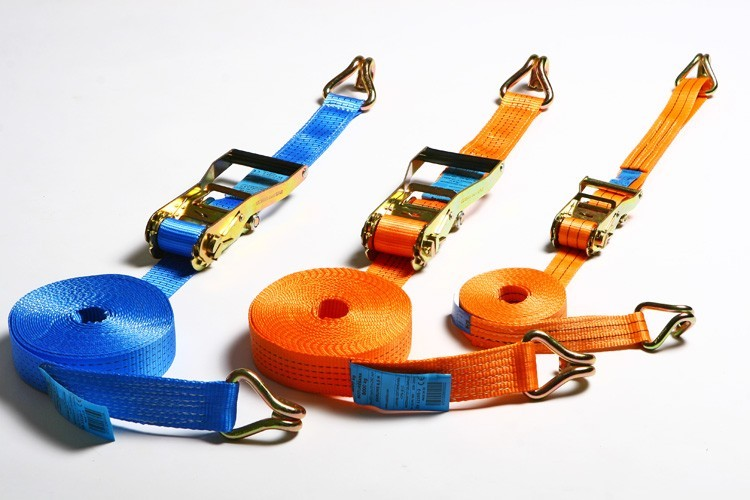
calendar_month July 16, 2024
Detailed Overview of Ropes and Cords in Maritime Lashing
Ropes and cords are some of the most traditional and versatile materials used for lashing in maritime shipping. Their flexibility, strength, and adaptability make them suitable for securing various types of cargo, from lightweight goods to medium-heavy loads. Here, we will delve deeper into the characteristics, types, applications, and best practices for using ropes and cords in the shipping industry
Characteristics of Ropes and Cords 1. Flexibility:Ropes and cords can be easily manipulated to secure cargo of different shapes and sizes. Their flexibility allows for tight and secure fastening, which is crucial for maintaining cargo stability during transit
2. Strength:High-quality ropes and cords are designed to withstand significant tensile forces. The strength of these materials ensures that they can handle the dynamic loads experienced at sea, such as ship movements due to waves and wind
3. Durability:Ropes and cords used in maritime settings are made from materials that resist wear and tear, UV radiation, saltwater, and other harsh environmental conditions. This durability is essential for maintaining their integrity over prolonged periods
4. Lightweight:Compared to chains and other heavy-duty securing devices, ropes and cords are relatively lightweight. This property makes them easier to handle and deploy, especially in situations where quick adjustments are necessary
Types of Ropes and Cords1. Nylon Ropes:
Known for their high strength and elasticity, nylon ropes are commonly used for lashing. They can absorb shock loads effectively, making them ideal for dynamic environments where cargo might shift slightly
2. Polyester Ropes:These ropes are valued for their low stretch and high abrasion resistance. Polyester ropes maintain their strength and flexibility even when exposed to wet conditions, making them suitable for maritime applications
3. Polypropylene Ropes:Lightweight and resistant to chemicals and moisture, polypropylene ropes are often used for temporary lashing tasks. They float on water, making them useful for specific maritime applications
4. Manila Ropes:Made from natural fibers, manila ropes are traditional lashing materials. While they are less common today due to the availability of synthetic alternatives, they are still used in certain applications where their specific properties are advantageous
Applications of Ropes and Cords 1. Securing Containers:Ropes and cords are often used to secure containers on deck, ensuring they do not shift during transit. They can be tied around the containers and fastened to the ships structure
2. Bundling Cargo:For smaller items or irregularly shaped cargo, ropes and cords are used to bundle them together securely. This bundling helps in maintaining the cargo's stability and preventing individual items from moving
3. Temporary Fastening:In situations requiring quick and temporary fastening, such as during loading and unloading, ropes and cords are highly effective. They allow for rapid adjustments and re-securing as needed
4. Securing Equipment:Ropes and cords are used to secure various equipment and machinery on board. This prevents movement that could damage the equipment or pose safety hazards to the crew
Best Practices for Using Ropes and Cords 1. Selection of Material:Choosing the right type of rope or cord is crucial. Factors to consider include the weight and nature of the cargo, environmental conditions, and the specific requirements of the voyage
2. Regular Inspection:Ropes and cords should be regularly inspected for signs of wear, fraying, or damage. Regular inspection ensures that any compromised materials are replaced before they fail, maintaining the safety and security of the cargo
3. Proper Knotting Techniques:Knowing and applying proper knotting techniques is essential for effective lashing. Common knots used include the bowline, clove hitch, and figure-eight knot, each serving specific purposes in securing cargo
4. Training and Skill Development:Crew members should be well-trained in the use of ropes and cords for lashing. This includes understanding the properties of different materials, practicing knotting techniques,] and being aware of safety protocols
5. Environmental Considerations:Considering the environmental conditions is vital. For instance, in salty and humid environments, using ropes made from materials with high resistance to moisture and saltwater is recommended to ensure longevity and reliability
ConclusionRopes and cords are indispensable tools in maritime lashing, offering a blend of flexibility, strength, and durability that makes them suitable for a wide range of applications. By understanding their characteristics, selecting the appropriate types, and adhering to best practices, shipping professionals can ensure the safe and efficient securing of cargo. This not only enhances the safety and integrity of the cargo but also contributes to the overall operational efficiency of maritime shipping